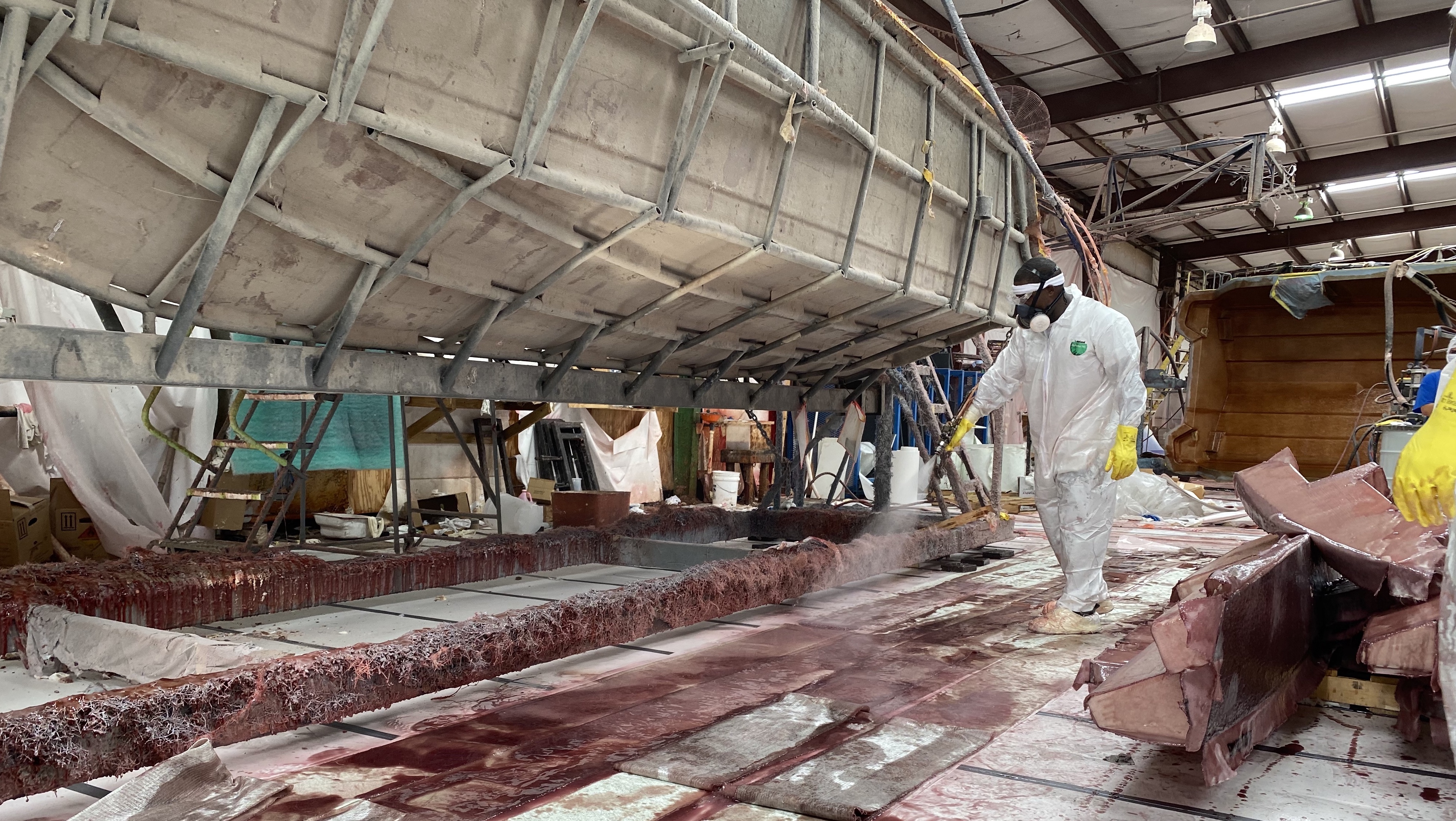DESIGN & TECHNOLOGY

Sailfish's Stringer System Ensures Unmatched Boat Integrity
Posted:22/01/2024 09:51PM
The Solid Promise Behind Sailfish’s Stalwart Stringer System Boat manufacturers can talk all day about fancy fishing features or a boat’s rugged abilities. But ultimately the integrity of any boat comes down to its hull. And the integrity of any hull lies in its robust stringer system. Sailfish doesn’t cut corners or allow room for error in boat building, starting with the all-important grid structure.
“The stringer system is the backbone that we build our premium product on,” says Denny Warren, Sailfish’s sales and transportation manager. “All these bulkheads are like ribs, and the main beams are like the spine.” Sailfish uses computer-aided design (CAD) to model its hulls. The engineering team then combines forces with the engineering crew at Compsys to design a stringer system unique to Sailfish. The bulkheads, main beams, and cross members fit together like a jigsaw puzzle. “It goes together only one way and one way only,” Warren explains. “So it’s a perfect fit each time.”
A stringer system gives a hull its might. But sturdiness in a fishing boat cannot equal heavy — or you’re going to have issues with ride, speed, holeshot, and fuel efficiency, just to name a few. A robust stringer system allows a hull to be built lighter, but that’s why the construction of the stringer system is so crucial. To make Sailfish stringers, Compsys pours two-part closed-cell foam into a mold. Once the foam cures, they remove it and then adhere a layer of quadraxial, which is four layers of woven and stitched fiberglass material. “Each layer is turned 90 degrees,” Warren says, “so you have full strength at 360 degrees.”
After adding qaudraxial fiberglass layup to the hull interior, Sailfish then sets the foam-filled and fiberglass-laid stringer system jigsaw puzzle into the hull. The main beams are placed first, followed by the cross beams. Then the whole system is wet down with resin. “Of course everything is hand-laid in there,” Warren says. “They roll out the resin and the air and pat it down by hand to get it to conform to the hull.” So why does Sailfish’s method set it apart from other boat manufacturers? “The traditional way of doing it, like many of our competitors,” Warren says, “is they’ll have a one-piece stringer mold that they’ll spray with a resin and then they’ll lay in the fiberglass.” After they pop the stringer out of the mold, they place it in the hull, and then they’ll drill holes to inject closed cell foam. “But they’re relying on a human,” Warren explains, “to make a 1.2-second shot, or a 2.3- second shot, in various areas to expand that foam out to fill the stringer system. So there’s too much room for human error to either not get enough or to get too much.”
When a stringer system lacks enough foam, voids fill with air and compromise hull integrity. And if the foam expands too much, it will push the stringer out or pull the hull down. “With ours,” Warren says, “it’s perfectly formed foam with glass wrapped around it each and every time. So there’s no room for human error on foam filling.” Additionally, some manufacturers use marine-grade pressure-treated plywood for all or part of their stringer system grid. There’s nothing wrong with the wood itself, Warren says, as long as it is 100% encapsulated with resin and fiberglass so that no moisture can get in. This is another area for human error. “Once water gets in there,” Warren explains, “it will expand.” Or if you live in a cold environment, freezing can also cause expansion and degrade the integrity of the fiberglass and the hull as a whole.
You won’t find any wood in a Sailfish stringer system — or anywhere else on a Sailfish, for that matter. What you get is a hull made entirely of composite materials, reinforced with Kevlar® and carbon fiber. “Composite materials have very minimal expansion and contraction,” Warren explains. Hulls are then finished with premium resin and gelcoats to prevent any fiberglass scarring or degrading that could lead to water seepage and blistering. No wood means zero risk of rot or warp. And Sailfish backs its hulls with a 10-year hull warranty and a Lifetime NO ROT guarantee.
The built-tough hulls on every Sailfish are a result of 35 years and counting of careful engineering and putting boats through their paces in offshore and inshore fishing adventures in all sorts of conditions. “You always have the option to go offshore,” Warren says, “But you have to come back.” Sailfish makes sure you will, and it all starts with what’s hidden within the hull: the stringer system.
Search
Subscribe to The Catch






















